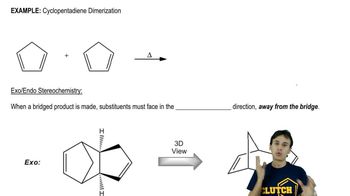Predict the product(s) you would expect from treatment of each compound with (1) dilute, neutral KMnO4 and (2) warm basic KMnO4, then dilute acid.
(c) hex-3-yne

 Verified step by step guidance
Verified step by step guidance Verified video answer for a similar problem:
Verified video answer for a similar problem:



 2:13m
2:13mMaster General features of alkyne cleavage. with a bite sized video explanation from Johnny
Start learning